Weekly cattle and sheep market wrap
Key points
- Yardings reached the highest totals since May and June for cattle and sheep, respectively.
- High prices and pre-harvest sales are helping bolster throughput.
- Strong restocker demand was seen for both cattle and lambs.
Cattle market
All cattle indicators improved this week, however, those for finished trim and lean meat fared softer than the feeder steer and restocker markets.
The Feeder Steer Indicator experienced the largest increase – up 11¢ to 492¢/kg liveweight (lwt). Producers' future market confidence and wet conditions in the north saw the Restocker Steer Indicator maintain prices above 500¢/kg lwt at 514¢.
Processor Cow and Dairy Cow Indicators remained fairly flat.
National cattle yardings were strong – reaching 86,000 head – the highest since early March. Mortlake, Dalby, Dubbo and Carcoar were the major yards contributing to the cattle yarding’s jump.
Sheep market
Despite increased yardings, there was little impact on sheep market prices. The Trade Lamb and Merino Lamb Indicator were the only ones to reduce and they dropped marginally.
The Restocker Lamb Indicator experienced a surge in throughput of 19,977 head. Prices rose, however, reinforcing strong demand for either breeding or trading store lambs. This also indicates producers expect lamb prices to remain elevated into the start of 2026.
Mutton and light lamb were the only categories to see a supply reduction, causing a rise in prices, sitting at 1,071¢ and 751¢/kg carcase weight, respectively.
Combined lamb and sheep yardings were the highest since June 2025 at 368,000 head.
Lamb yardings increased this week, reaching 368,000 head. Selling centres such as Wagga and Hamilton contributed some of the biggest weekly throughput increases.
Wagga recorded over 70,000 head this Thursday. The increase in yardings is attributed to pre-harvest offloading and early 2025 lambs reaching market specifications.
Additionally, high lamb prices earlier in November have assisted to pull light and store lambs to market as producers look to capitalise on high prices.
Slaughter
Week ending 14 November
Cattle slaughter
Cattle slaughter totalled 154,917 head – a 5,850 increase on the previous week’s numbers − driven largely by Victoria and Tasmania.
State-by-state breakdown of cattle slaughter:
- NSW: 35,695 head
- Queensland: 81,523 head
- SA: 3,812 head
- Tasmania: 4,989 head
- Victoria: 25,186 head
- WA: 3,712 head
Sheepmeat slaughter
Lamb slaughter totalled 424,400 head. This is up 5% on the previous week, which can all be attributed to the Victorian increase – reaching 214,035 head.
The lamb slaughter increase aligns with more new season lambs entering the market and producers looking to offload stock prior to harvest.
State-by-state breakdown of lamb slaughter:
- NSW: 101,646 head
- Queensland: 1,279 head
- SA: 42,259 head
- Tasmania: 5,625 head
- Victoria: 214,035 head
- WA: 59,596 head
ReportsSeveral industry reports were released this week, including the Australian Bureau of Statistics September Quarterly Slaughter and Production data, and Meat & Livestock Australia (MLA) and Australian Wool Innovation’s Sheep Producer Intention Survey. These reports showed:
Keep an eye out next week for the release of the MLA/Australian Lot Feeders’ Association Lot Feeding Brief which measures the size of Australia’s grainfed sector. Market CoverageMLA does not cover the special store sales in SA for sheep – however reports are that prices are strong in Narracorte, especially for cross-bred ewes. |
Attribute content to Stephen Bignell, MLA Market Information – Manager
Information is correct at the time of publishing on 21 November 2025.



